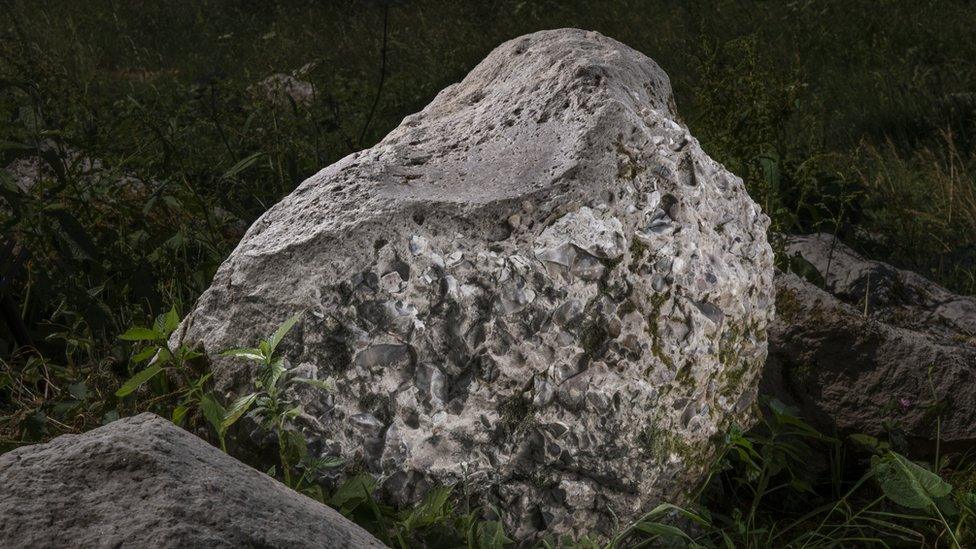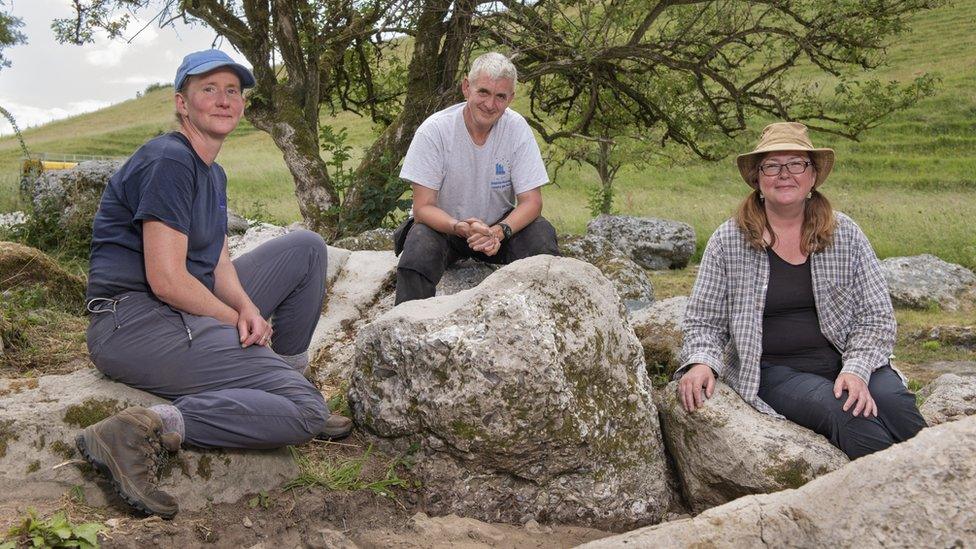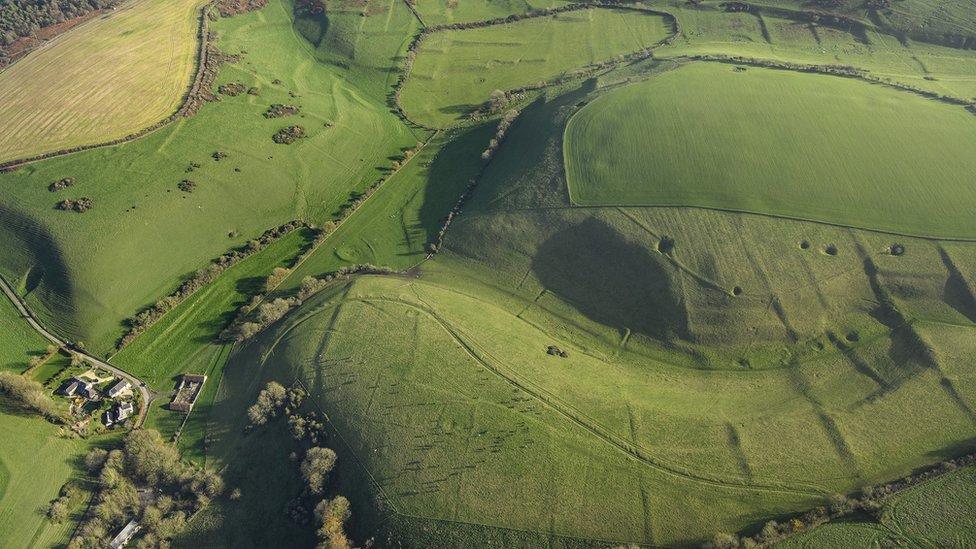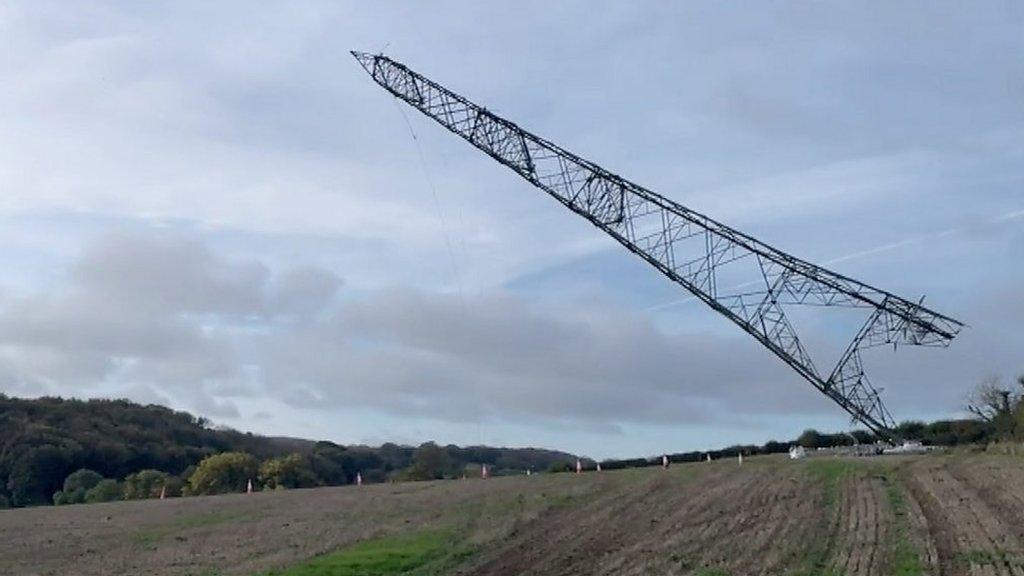Archaeologists find rare Stone Age boulder in Dorset
- Published

The polissoir was an essential tool for Neolithic communities
A team of archaeologists has discovered a rare rock used to make tools in the Stone Age.
The "polishing boulder", found in the Valley of the Stones near Dorchester, would have been used to make stone axe heads more than 5,000 years ago.
It is only the second undisturbed polissoir to be found in its original position in England.
The boulder will be left where it is, rather than taken to a museum, while the area around it is excavated.
The discovery was made in the designated Area of Outstanding Natural Beauty during a heritage project run by community interest company Past Participate.

Dr Hayley Roberts (left), Jim Rylatt and Dr Anne Teather are part of the team that discovered the rock
The boulder is formed of sarsen stone, a hard form of sandstone that was also used to build Stonehenge.
Sarsen boulders are found across southern England, but out of nearly 1,000 that have been examined by experts, very few are known to have been used for polishing stone tools.
Jim Rylatt, director of archaeology at Past Participate called the find "unexpected".
"The stones would have been extremely important to Neolithic people, as without axes they could not have cleared woodland and farming would have been impossible," he said.

The artefact was found on a Site of Special Scientific Interest in west Dorset
Dr Anne Teather, also a director at Past Participate, added: "This incredible discovery represents the research value that community heritage projects can bring.
"We are grateful for the Farming in Protected Landscapes scheme for funding that stimulated these investigations into the Valley of Stones, and Historic England and local landowners for their support.
"We hope to secure further funding that will enable us to continue our work in this landscape with our committed team of volunteers."
Following the discovery, the immediate area around the stone has been excavated for specialist analysis to see if any traces of the makers of the stone axes are still present.

Follow BBC South on Facebook, external, Twitter, external, or Instagram, external. Send your story ideas to south.newsonline@bbc.co.uk.
Related topics
- Published28 October 2022
